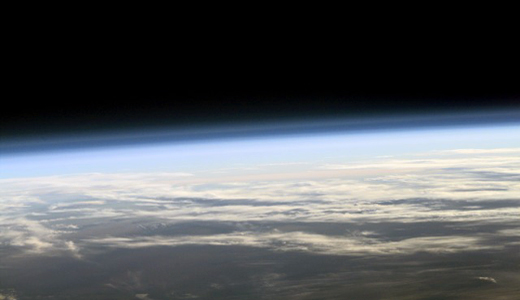
James Cameron made a historic solo dive in his Deepsea Challenger to the Mariana Trench, the deepest part of the world’s oceans, located in the western Pacific about seven miles down.
Cameron promised himself that when he got there he would really drink in how unusual it is. “There had to be a moment where I just stopped, and took it in, and said, ‘This is where I am; I’m at the bottom of the ocean, the deepest place on Earth. What does that mean?”‘ After spending three hours at the bottom, he told reporters, “I just sat there looking out the window, looking at this barren, desolate lunar plain, appreciating.”
Cameron is not a scientist, but an explorer. He has made over 70 deep-sea dives and has said that he makes films in order to finance his love of deep sea exploration. But does this actually contribute to our knowledge of the oceans?
Bloggers Al Dove and Craig McClain of Deep Sea News posed the question, is this “a scientific milestone or a rich guy’s junket?” They expand on the historical significance of Cameron’s dive and motivations for exploration these days, compare doing research by remotely operated vehicle instead of a human occupied vehicle, and opine on the possibly manufactured media excitement surrounding this and other planned HOV dives. They conclude, “When Cameron succeeds, we all succeed.”
The ocean depths are an exciting place for exploration, discovery, and science. But in 2011, a report on the world’s oceans by many of the world’s top ocean scientists, they warned of mass extinction of marine life as one of the results of accumulating problems in the oceans of the world. Major industries that dump pollution, that profit from over-fertilization of agricultural lands, and that dump oil are major causes.
The beauty and wonder of the oceans cannot be isolated from these dangers.
Here in the U.S.,we must deal with the ongoing political struggle that manifests itself as an attack on science by those who are so totally driven to support the profit motive that they reject it.
Last April, a report in Science Daily cautioned, “Democrats and Republicans are increasingly divided over global warming.”
Dr. Aaron M. McCright of Michigan State University stated: “Instead of a public debate about different policies to deal with global warming, a significant percentage of the American public is still debating the science. As a result, we’re failing to significantly address one of the most serious problems of our time.”
In 2007, International Publishers released the collection of environmental writing by Virginia Warner Brodine, titled Red Roots Green Shoots. In environmental sociologist Alan Wight’s review, he pointed out the need for us to reconsider our economic and environmental practices, and highlighted the important contributions Brodine made in addressing ecological problems with her writings from 1976 to 1999.
“The healthy functioning of ecosystems is directly related to community and individual wellbeing. The author [Brodine] is clear that we can create humane jobs, provide a livable wage, and not degrade the planet.”
On April 22, 1970, when the first earth day rallies took place, 20 million Americans – largely self-organized – took to the streets to protest environmental degradation. That was ten percent of the population of the country!
These days, many scientists and inventors are working hard at finding new and better ways of accomplishing energy production, manufacturing, agriculture, and transportation. Unions are organizing to fight particular health and environmental threats, and millions of us strive to make better choices for the environment in our own lives. The environmental crises we face are not primarily technical problems but require mass movements and the involvement of tens of millions of people.
A view of our planet earth whether from the depth’s of the ocean or from an orbiting satellite, or a look outward at galaxies billions of light years away is inspiring. So thank you John Cameron for your contributions to inspiration, but we still have our work cut out for us to clean up our beautiful, awe-inspiring, and magnificent ocean.
Photo: Pacific Ocean as viewed from space. Image courtesy of the Image Science & Analysis Laboratory, NASA Johnson Space Center http://eol.jsc.nasa.gov/scripts/sseop/photo.pl?mission=STS073&roll=E&frame=5113

MOST POPULAR TODAY

High Court essentially bans demonstrations, freedom of assembly in Deep South

Zionist organizations leading campaign to stop ceasefire resolutions in D.C. area

U.S. imperialism’s ‘ironclad’ support for Israel increases fascist danger at home


UN warns that Israel is still blocking humanitarian aid to Gaza






Comments